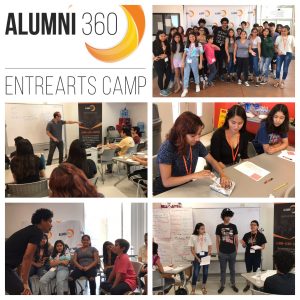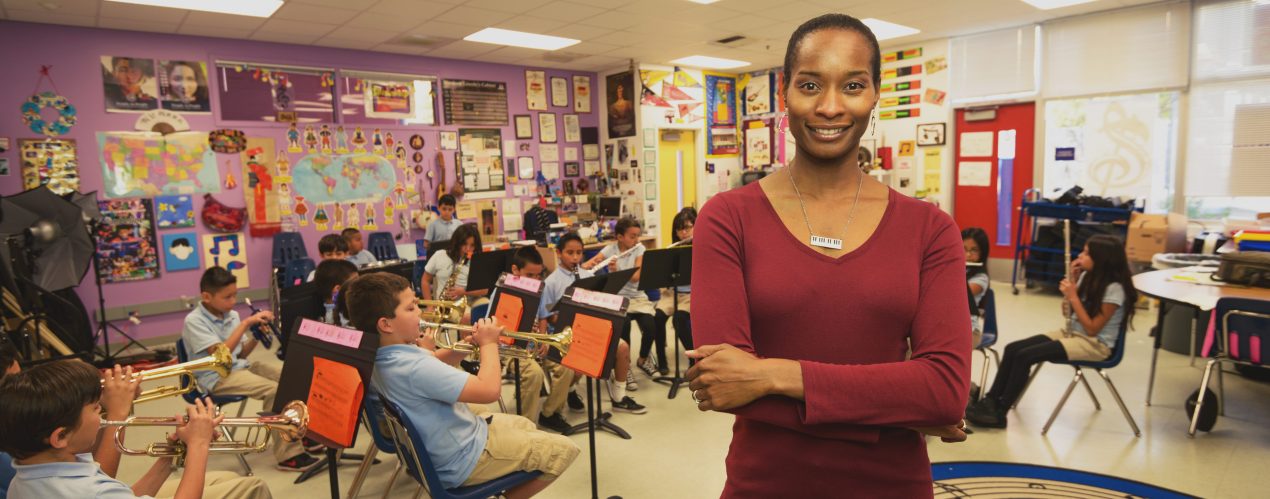There’s Your Difference: The Cost of Educating Just For Employment And Not For Entrepreneurship
There’s Your Difference
“…Genein, you were taught to be an employee and a consumer. I was taught, from kindergarten, to be an entrepreneur and an investor. There’s your difference…”
Once I heard this statement, I was stunned in disbelief because he was absolutely right. He went to a school—a very expensive private school—that cultivated creativity, which taught problem solving with relevance, value and novelty, and not only artistry. He went to a school that taught the common academic subjects in a non-common way. These subjects were intertwined with creativity and big-picture thinking; they stood on the foundation of creating something of value for an actual audience and not just regurgitating content on a test.
His writing projects didn’t die with the red-letter grade on his teacher’s desk but found life in publications and marketing platforms. His persuasive essays took flight in sales campaigns, networking simulations, and entrepreneur pitch events, all within his K-12 private education classrooms.
He was groomed to be an entrepreneur and a creative thinker. He was groomed to connect the unconnected, have empathy for his target markets and cultivate profitable opportunities that the rest of us would miss. It wasn’t about learning the content. It was about understanding how the content learned could manifest into something bigger; something more productive than just responses on a scantron. It wasn’t about repeat and regurgitate. It was about produce and create.
Wow.
A Closet Entrepreneur
When I heard that statement, it hit me hard. I felt upset because he had succinctly verbalized the angst I felt throughout my own formative school years. I did have some great teachers but I always felt that there was something missing; a missing phase in my learning.
I have always been an entrepreneur unknowingly. It first exposed its roaring head in the form of a fanny pack hanging low around my waist stuffed with Jolly Ranchers when I was in the 4th grade. Even though I couldn’t tell you the definitions of expenses, profit/loss statements, or overhead costs, I did know if I sold each Jolly Rancher for five cents, I would end up making way more than what I had paid for the entire bag.

That was all I needed to know, and unfortunately, that was also the beginning of my faulty journey with this inward entrepreneurial drive, which had no place to blossom. In college, I always had a side-hustle and was very aware of random opportunities to earn money. Nevertheless, I had no entrepreneurial training, so I really didn’t know how to effectively turn any of my ideas into profitable businesses. I had no mentor, and there was no EntreArts Entrepreneurship Camp like my Alumni360 students have today.
This drive even manifested itself in my career as an elementary school teacher. I was blessed to be at a school that allowed me the creative freedom to act on my ideas and actually produce. I initiated numerous programs, created and sold DVD’s of our shows to raise money for my classroom escapades, and won over $100,000 of resources for my school because I loved the thrill of turning nothing into something all from a simple idea. I had been an entrepreneur this whole time and didn’t even know it.
A Gallop Poll stated that 70 percent of high school students want to learn entrepreneurship but have no opportunity to do so. This lack of training is especially prevalent in low wealth areas for students of color. There is nothing wrong with being an employee—I’ve been one since I was 15 years old—but there is something wrong when we do not give students the option and the tools to have other profitable choices in life. Add in the fact that most students graduate high school with little to no financial education, and it makes you think: are we really educating our students to have the power to create their own economy or only be ‘in debt’ employees and blind consumers?
I courageously asked this question as I launched the 2019 Alumni360’s EntreArts Camp, which combined creative thinking, technology awareness with entrepreneurship training for students in low wealth areas. Giving students from all backgrounds these tools earlier in life is critical so they can actually have the choice to be an employee, intrapreneur, or an entrepreneur. Teaching them financial literacy in an engaging visceral way, that includes the arts and creativity development, will give and encourage them to become producers of value, financially savvy, and investors earlier in life. This is how you break cycles of poverty.
A Message From Our Client
But you don’t have to take my word for it. Since I have been out of the system for over 20 years as a student, I asked our ‘clients’ (aka our students) about their experience. Here is a response from a student, Brenda C. who recently just exited the K-12 system.
I have friends who went to a certain schools and their focus is definitely on teaching them how to be producers. It seems we were taught to be “factory workers” which has now, in the 21st century USA, become more oriented towards consuming goods, since most manufacturing/ factory jobs are now abroad.
My fifth grade teacher vividly remembers me crying when I first left our elementary school to go to the middle school. I was shocked by how some of the teachers seemed to care very little about us being creative in the classroom. They simply did not know how to promote creativity in the classroom or us bringing our own ideas to life. Sure we had projects, but most of the time they had strict regulations and they all had to look a certain way. I remember the mantra of “Follow and read instructions” that was pounded into us, whereas we rarely got to create our own rules or directions for any type of project.
Now, in our defense (coming from a teacher), Brenda did receive a great education when it came to reading, writing and the other basic fundamentals. But as she heads into a future where jobs and workforce sectors are shifting rapidly beneath her feet, her ability to think creatively and produce her own financial economy and professional opportunity is seriously lacking. Add on the amount of debilitating debt she will accrue because of the student loan crisis, this now creates a serious mountain she will have to overcome in order to start building wealth for herself and future family.
A Teacher’s Dilemma or a Curriculum Crisis?
I know the challenges to adding in one more thing into an already packed teaching day. There’s no room for more content. There’s no time. There are no funds to adopt a new curriculum. There’s no training for educators to feel competent to teach financial education, entrepreneurship or creative thinking development.
Trust me. As a classroom teacher for 15 years, I know the reasons why this petition would face opposition. But what is the cost of not giving our students these critical skills? We need to look at the end result we desire from the curriculum and how it matches (or doesn’t match) with the skills our students need in this new workforce. As of now, I believe they are misaligned.
With proper content integration, creativity and entrepreneurship training can be infused into the content that is already being taught. Creativity and entrepreneurship can be the vehicle in which the academic content can be manifested into real life situations. Entrepreneurship has embedded within it so many life skills needed to navigate the innovative future; communication, creativity, finance, empathy, to name a few. There are ways to combine it all for effective visceral learning that makes a difference in the economic and professional outcome of our students. Businesses are now demanding that our students enter the workforce with these creative innovative thinking abilities.
These entrepreneurial choices must be made available to our students if they are expected to thrive economically and produce value for themselves, their families and communities. They deserve the chance to be exposed to opportunities and not be hindered from this exposure merely because of their zip code and/or their ethnicity.
Why?
It’s actually quite simple: these are the choices which will ultimately affect not only their lives but our lives as well.
Our country is built upon citizens who produce value; who produce something from nothing. Let’s give our nation the top producers, even if they might come from the most unlikely places. Let’s give our students a shot at becoming the best creative version of themselves. Let them be the change we need to move this nation forward.
Let them be the difference.
Share this post


